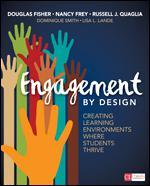Professional Learning
- Module 1: The Inviting Classroom
- Module 2: Relationships
- Module 3: Clarity
- Module 4: Challenge
- Module 5: Engagement
Professional Learning Guide: Handouts
- Figure 2.1: Four Conditions of Healthy Relationships
- Figure 2.2: Teacher Expectations and Student Achievement (TESA) Interaction Model
- Figure 2.3: Fifteen Interactions for Teacher Expectations and Student Achievement (TESA)
- Figure 2.4: Ways to Say “Good Job”
- Figure 3.1: Analyzing Standards
- Figure 3.2: English Class Survey
- Figure 3.3: Holistic Argumentative Writing Rubric
- Figure 3.4: Citizenship Rubric
- Figure 4.1: Difficulty and Complexity
- Figure 4.3: Techniques to Teach Peer Responding
- Figure 4.4: Phases of Text-Dependent Questions
- Figure 5.3: Balanced Model for Optimal Learning
Templates and Rubrics
- Figure 3.1: Analyzing Standards
- Figure 3.2: English Class Survey
- Figure 3.3: Holistic Argumentative Writing Rubric
- Figure 3.4: Citizenship Rubric
Videos
Chapter 1. The Inviting Classroom
- Video 1: What Is Engagement?
- Video 2: The Intentionally Inviting Classroom
- Video 3: The Intentionally Inviting Teacher
Chapter 2. Relationships
- Video 4: The Importance of Relationships
- Video 5: The Importance of Wait Time
- Video 6: The Importance of Praise
- Video 7: Integrating Students’ Personal Interests
Chapter 3. Clarity
- Video 8: Establishing Purpose
- Video 9: The Importance of Success Criteria
- Video 10: Feedback
Chapter 4. Challenge
- Video 11: Challenge
- Video 12: Peer Critiques
Chapter 5. Engagement
- Video 13: Fostering Self-Worth
- Video 14: Student Self-Refection on Engagement
- Video 15: What Does Engagement Look Like and Feel Like?

